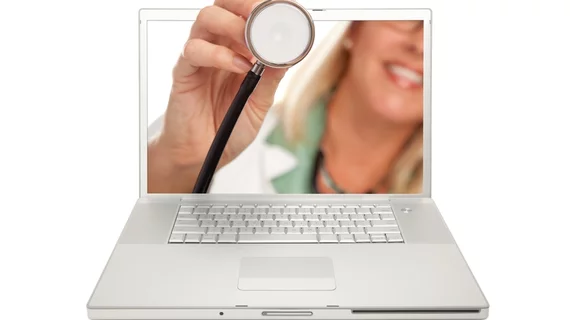Will virtual physicals augment yearly wellness visits—or replace them?
If COVID put telemedicine’s pedal to the metal, it was only speeding up evolutionary change fueled by advances in technology prior to 2020. During the acceleration, some have begun asking if annual in-person visits with primary care providers are doomed.
This week The Wall Street Journal is taking a look at some key innovations likely to help along—and some inherent obstacles likely to hold back—any concerted movement to normalize virtual primary care.
Milestones reached or within sight at some tech-forward provider organizations include:
Mayo Clinic is already sending lab kits to patients living in remote areas, enabling them to have specimens collected locally and sent over to Mayo for analysis. Soon the specimens may include blood for “liquid biopsy” testing for cancer biomarkers.
Meanwhile the high-performing health system based in Rochester, Minn., has plans to remotely leverage all sorts of patient information that can be gathered and transmitted via smartphones, smartwatches and other popular wearables.
“Doctors elsewhere have begun adopting this strategy; some experts believe it is poised to fundamentally change how the physical is done and could prompt patients to engage more proactively in their health,” writes WSJ reporter Ron Winslow in the article, which the newspaper posted Sept. 6.
At San Francisco-based UCSF Health, physicians can opt to use digital stethoscopes for remote checking of heartbeat and breathing. Researchers there also have come up with a way to use a smartphone camera and flashlight to bloodlessly detect a diabetes biomarker.
“We’re in the messy adolescence of this experience,” UCSF’s Michael Blum, MD, tells the WSJ. “The technology in 10 to 20 years’ time will look nothing like the technology we have now.”
Pennsylvania-based Geisinger is “piloting a DNA screening test in routine physicals that targets some 60 known disease-causing mutations—including the BRCA1 and BRCA2 genes associated with breast and other cancers and a mutation linked to a potentially fatal heart-muscle disease called hypertrophic cardiomyopathy,” Winslow reports.
“Initial results show the effort has detected a culprit mutation in 2.1% to 2.6% of about 130,000 patients, Geisinger says. Genetic counselors help patients and their doctors interpret positive findings and map strategies for managing risk of the diseases, says Christa Martin, Geisinger’s chief scientific officer.”
As for obstacles likely to thwart the envisioned virtualization of primary care, nothing looms larger than the “deluge of data already threatening to overwhelm the healthcare system.”
Fortunately for tele-primary care proponents, the healthcare system is learning how to look toward artificial intelligence for help managing big data.
“AI and machine learning advances will be necessary to find important signals in the sea of noise that streams in from digital devices and gene sequencers, as well as minimize the chance such signals are false alarms that lead to unnecessary and costly additional tests and procedures,” Winslow writes. “AI algorithms will need validation to make sure they are stripped of bias and provide information relevant to diverse populations.”
At the same time, low-tech challenges aren’t going away anytime soon. Take doctor training, insurance reimbursement and regulatory support, for example.
Plus evidence will need to be organized such that it can “vouch for the usefulness and cost-effectiveness of digital approaches” before “a new kind of physical” has a chance to become the norm, Winslow points out.
Still, he projects:
AI-assisted integration of the patient’s medical history, monitoring data and personal genome and microbiome, run against research in the medical literature, may one day be the basis of such visits. The hope is that it would enable a more personal conversation between doctor and patient to set up or maintain strategies for healthy living.”
The (paywalled) article is here.

